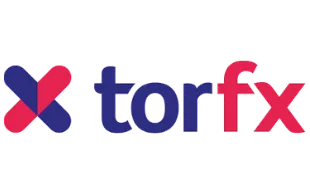TorFX Offer

- No transfer fees
- Price match guarantee
- Dedicated account manager assigned to you
- Forex tools available
Banks and other financial institutions keep track of your money using a system of unique codes assigned to each bank or account they do business with. Different countries use different systems, and the two most common are IBAN and SWIFT codes.
| Description | Where you can find it | Example | |
|---|---|---|---|
SWIFT | A SWIFT number is an alphanumeric number containing information that identifies a bank and branch. It can be eight or 11 characters long, depending on which bank office it refers to. | Bank statement, Online banking system, Inquire in the bank | NFBKUS33 |
IBAN | An IBAN number is an alphanumeric number containing information that identifies a bank, country and account number. With lengths fixed by country, IBAN codes can be up to 34 characters. | Bank statement, Online banking system | GB 29 NWBK 601613 31926819 |
SWIFT is short for the Society for Worldwide Interbank Financial Telecommunication. Despite its oversized name, it's simply a global messaging network used by financial institution to send and receive information, such as money transfer instructions.
Unlike IBAN, which identifies specific bank accounts, SWIFT refers to a specific bank only - including banks in Australia. Some 40,000 banks and offices worldwide are part of the SWIFT network.
A SWIFT number is an alphanumeric number containing information that can identify either a bank, or a bank and particular branch. It can be 8 or 11 characters long, depending on which bank office it refers to.
An example of a SWIFT code is this one for Westpac WPACAU2S. If the sending bank requires an 11 character SWIFT code, Westpac uses the same generic one for all of their branches, and it is WPACAU2SXXX. Another example is ING Bank, their SWIFT/BIC code is INGBAU2SXXX.
We can break down this SWIFT code to discover:
If you live in a country that participates in SWIFT, find your SWIFT number on your bank statement, by signing in to your online banking system or by calling your bank.
If you're sending money internationally and need a SWIFT number, ask your recipient for the SWIFT number of the bank to which their account belongs.
No. For domestic payments, Australian banks use a domestic routing code to identify your specific bank and bank account. It's made of a nine-digit number that identifies your bank, branch and your unique account number.
This routing number is found by signing in to your online banking system or reading your bank statement.
Short for International Bank Account Number, an IBAN code is a unique number assigned to specific bank accounts involved in international business. Though not exclusive to Europe, IBAN is used in most European countries. Australia does not use IBAN numbers, but you could encounter them when sending money to an international recipient - specifying the IBAN number makes for faster transactions.
An IBAN number is an alphanumeric number containing information that identifies a bank, country and account number. With lengths fixed by country, IBAN codes can be up to 34 characters.
An example of an IBAN code in at Great Britain's National Westminster Bank is GB 29 NWBK 601613 31926819.
Breaking down our UK IBAN code, we find:
If you live in a country that uses IBAN, you can find your IBAN number on your bank statement or by signing in to your online banking system.
If you're sending money internationally and need an IBAN number, ask your recipient for the IBAN number of their deposit account.
The mysterious IBAN and SWIFT codes are anything but: They identify specific banks among the many financial transactions conducted worldwide among bank accounts. And they're especially important when it comes to international money transfers.
Learn more about getting the best rates and fees to friends, family and businesses abroad in our guide to international money transfers.
Your guide to the best foreign currency accounts for business, including how to open an account.
Australians can buy property in Italy, so read this guide to find out how you can secure an Italian home.
If you're looking to transfer money out of Australia, read our guide on the six best transfer companies.
Find out everything you should know about telegraphic transfers and how safe they are.
Is there any way to send money from Australia to someone in a country with economic sanctions?
If you need an alternative to Wise, check out how these options compare.
We took a look at international money transfer apps and were impressed by what we saw. Learn why.
Learn the red flags that signal an online scammer and ways to protect yourself from becoming a victim.
Check out our comprehensive review of CurrencyFair international money transfers, including fees, exchange rates, security and transfer times.
Compare international money transfer services to receive money here in Australia.